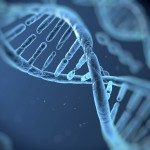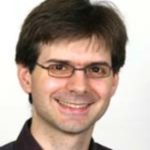Link to Pubmed [PMID] – 25201685
Curr. Biol. 2014 Sep;24(18):2111-23
BACKGROUND: The conserved Fat and Core planar cell polarity (PCP) pathways work together to specify tissue-wide orientation of hairs and ridges in the Drosophila wing. Their components form intracellularly polarized complexes at adherens junctions that couple the polarity of adjacent cells and form global patterns. How Fat and Core PCP systems interact is not understood. Some studies suggest that Fat PCP directly orients patterns formed by Core PCP components. Others implicate oriented tissue remodeling in specifying Core PCP patterns.
RESULTS: We use genetics, quantitative image analysis, and physical modeling to study Fat and Core PCP interactions during wing development. We show their patterns change during morphogenesis, undergoing phases of coupling and uncoupling that are regulated by antagonistic Core PCP protein isoforms Prickle and Spiny-legs. Evolving patterns of Core PCP are hysteretic: the early Core PCP pattern is modified by tissue flows and then by coupling to Fat PCP, producing sequential patterns that guide hairs and then ridges. Our data quantitatively account for altered hair and ridge polarity patterns in PCP mutants. Premature coupling between Fat and Core PCP explains altered polarity patterns in pk mutants. In other Core PCP mutants, hair polarity patterns are guided directly by Fat PCP. When both systems fail, hairs still align locally and obey signals associated with veins.
CONCLUSIONS: Temporally regulated coupling between the Fat and Core PCP systems enables a single tissue to develop sequential polarity patterns that orient distinct morphological structures.

